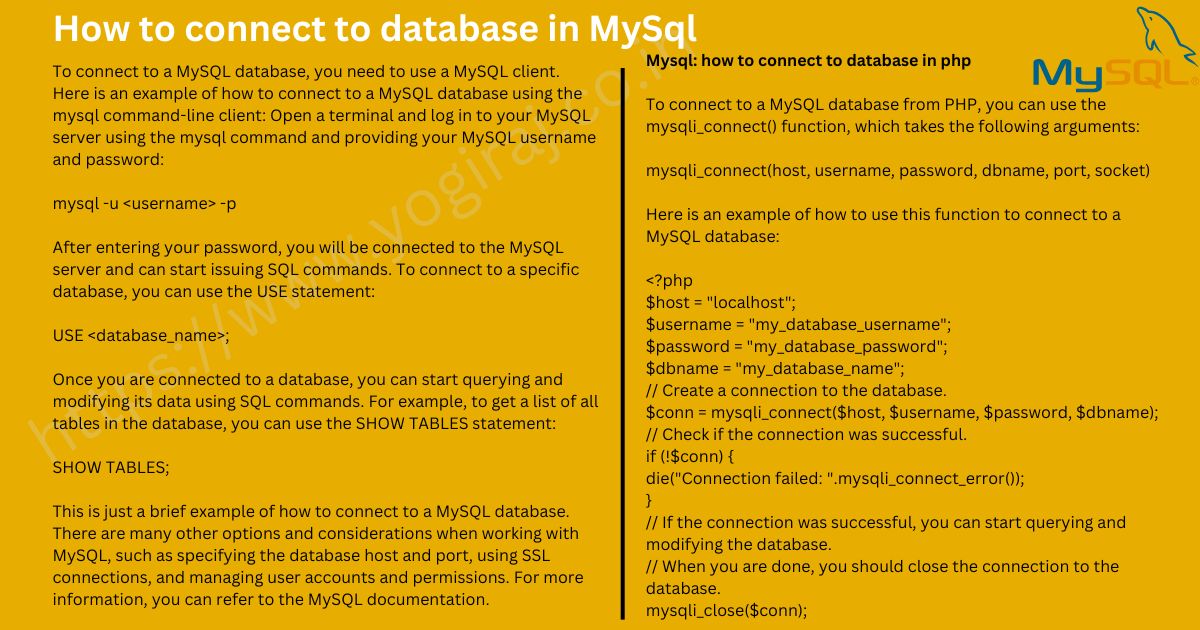MySql – how to connect to database
by Yogi P - December 15, 2022
How to connect to database in MySql
To connect to a MySQL database, you need to use a MySQL client. Here is an example of how to connect to a MySQL database using the mysql command-line client:
Open a terminal and log in to your MySQL server using the mysql command and providing your MySQL username and password:
mysql -u <username> -pAfter entering your password, you will be connected to the MySQL server and can start issuing SQL commands.
USE <database_name>;
Once you are connected to a database, you can start querying and modifying its data using SQL commands. For example, to get a list of all tables in the database, you can use the SHOW TABLES statement:
SHOW TABLES;
This is just a brief example of how to connect to a MySQL database. There are many other options and considerations when working with MySQL, such as specifying the database host and port, using SSL connections, and managing user accounts and permissions. For more information, you can refer to the MySQL documentation.
Mysql: how to connect to database in php
To connect to a MySQL database from PHP, you can use the mysqli_connect() function, which takes the following arguments:
mysqli_connect(host, username, password, dbname, port, socket)
Here is an example of how to use this function to connect to a MySQL database:
<?php$host = "localhost";$username = "my_database_username";$password = "my_database_password";$dbname = "my_database_name";// Create a connection to the database.$conn = mysqli_connect($host, $username, $password, $dbname);// Check if the connection was successful.if (!$conn) {die("Connection failed: ".mysqli_connect_error());}// If the connection was successful, you can start querying and modifying the database.// When you are done, you should close the connection to the database.mysqli_close($conn);This is just a basic example of how to connect to a MySQL database from PHP. There are many other options and considerations when working with MySQL and PHP, such as using prepared statements to protect against SQL injection attacks, and configuring the PHP mysqli extension for better performance.
For more information, you can refer to the PHP manual and the MySQL documentation.












